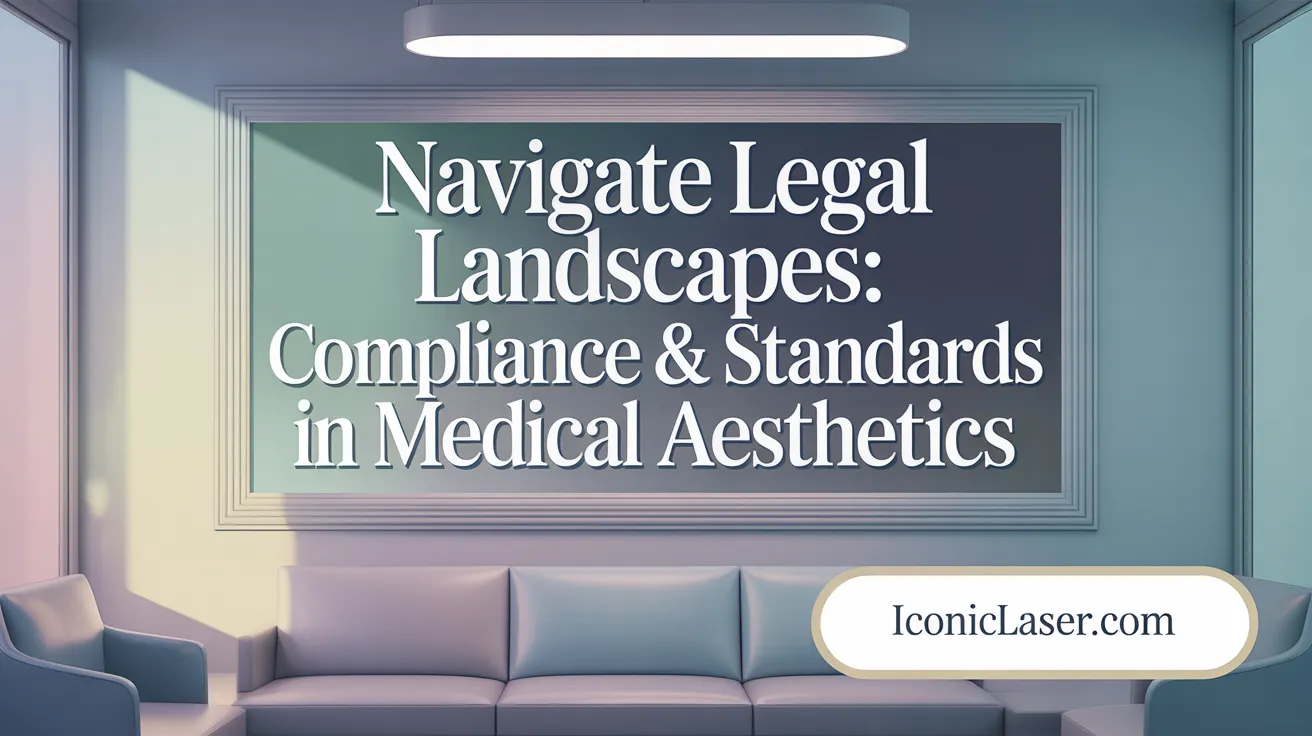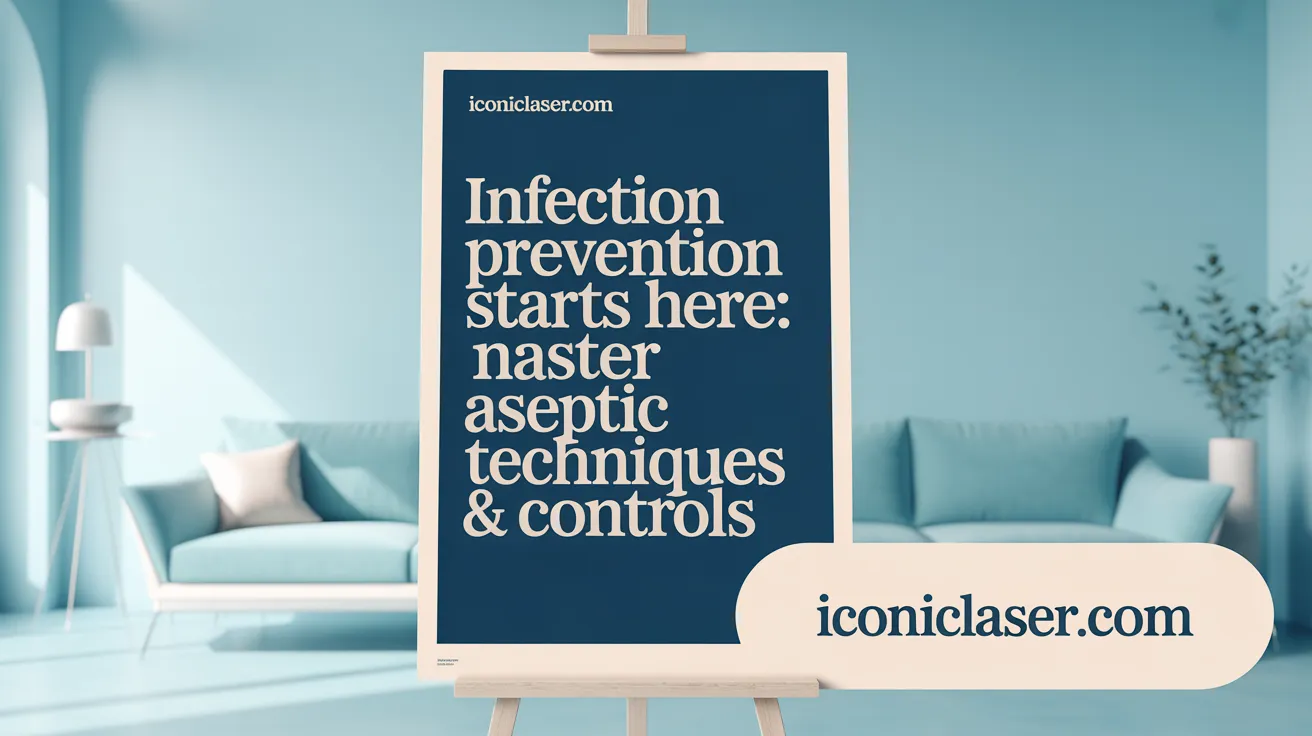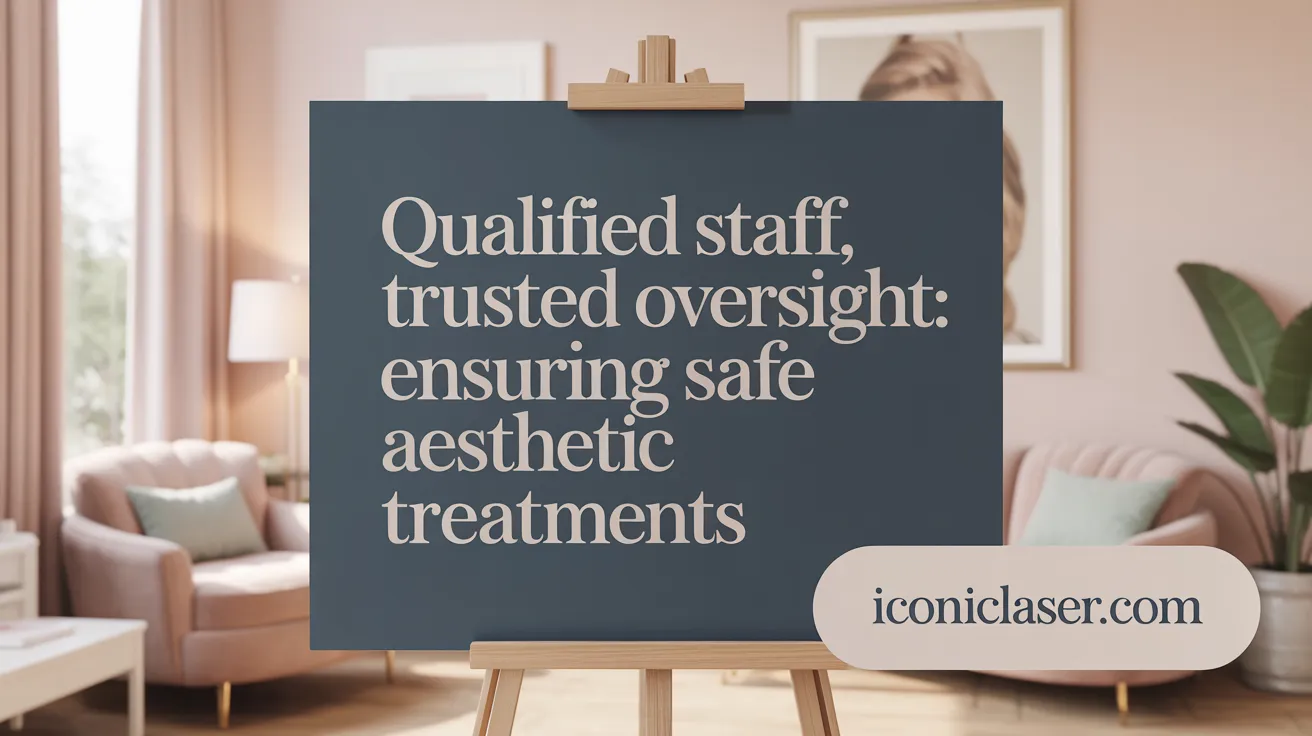The Critical Role of Safety in Medical Aesthetic Clinics
With the explosive growth of medical aesthetics worldwide, patient safety remains the cornerstone of successful practice. Modern clinics face heightened expectations to manage risks effectively, comply with evolving regulations, and deliver ethical, high-quality care. This article explores the essential protocols, regulatory frameworks, risk management strategies, infection control measures, and ethical standards shaping patient safety in contemporary medical aesthetics clinics.
Core Safety Protocols and Best Practices in Medical Aesthetics

What are the core safety protocols and best practices for ensuring patient safety in modern medical aesthetics clinics?
Ensuring patient safety in medical aesthetics requires a combination of detailed assessment, strict hygiene, trained personnel, and emergency readiness. The process begins with comprehensive patient assessments—this includes reviewing medical histories, identifying allergies, and screening for contraindications such as active infections or immune system issues, as highlighted in Patient screening and medical history documentation. Clear, informed consent is vital, ensuring patients understand the potential risks, benefits, and alternatives of the procedures (Informed consent in aesthetic treatments).
Aseptic techniques are foundational to prevent infections. Practitioners must follow protocols for skin preparation, use sterile equipment, and dispose of needles or single-use devices properly. Maintaining a clean treatment environment through regular disinfection and environmental controls is critical (Infection control in aesthetic clinics).
Staff training is paramount. All team members should be well-versed in current safety standards, including OSHA guidelines for bloodborne pathogens, ANSI Z136 laser safety standards, and specific protocols relevant to their roles. Regular continuing education, workshops, and certification programs help keep skills sharp and knowledge up-to-date (Continuous education for medical spa staff).
Emergency preparedness involves staff being trained to recognize and respond promptly to adverse events such as allergic reactions, vascular occlusions, or infections (Managing complications in aesthetic medicine). This includes having emergency medications on hand, such as hyaluronidase for filler complications and epinephrine for anaphylaxis, as well as knowing protocols for the rapid management of complications.
Proper equipment maintenance and calibration are essential to ensure safe operation and accurate results. Maintaining detailed records of procedures, monitoring device performance, and conducting routine audits support ongoing quality assurance and regulatory compliance (Audits of clinical practices and documentation).
Managing complications effectively requires a solid understanding of facial anatomy, prompt recognition of signs of issues like vascular compromise, and use of appropriate medications. In some cases, consultation with specialists or hospitalization might be necessary (Recognition and management of vascular occlusions).
Finally, all procedures should be performed under the supervision of qualified medical professionals within regulated facilities (Medical spas regulatory compliance). These practices collectively help minimize risks, improve outcomes, and foster trust between practitioners and patients.
Regulatory Standards, Legal Guidelines, and Compliance in Medical Aesthetics
 In the field of medical aesthetics, adhering to regulatory standards and legal guidelines is vital for ensuring patient safety, maintaining professional integrity, and avoiding legal repercussions. These requirements vary by region, but certain core principles are universally recognized.
In the field of medical aesthetics, adhering to regulatory standards and legal guidelines is vital for ensuring patient safety, maintaining professional integrity, and avoiding legal repercussions. These requirements vary by region, but certain core principles are universally recognized.
First and foremost, licensing and scope of practice define who can perform certain procedures. Qualified professionals—including licensed physicians, nurse practitioners, and physician assistants—must oversee treatments that involve impacting the living tissue of patients, such as injections, laser therapies, or chemical peels. State medical boards enforce these regulations, requiring practitioners to hold valid licenses and follow detailed treatment protocols.
Ownership regulations also play a critical role. Many states restrict ownership of med spas to licensed medical professionals or entities with physician oversight. Laws like the corporate practice of medicine prohibit non-physicians from outright ownership unless structured through legal entities such as Management Services Organizations (MSOs). These structures allow non-physicians to operate certain business functions while physicians retain clinical control.
Facility accreditation and treatment protocols are governed by strict safety standards. Med spas must comply with state and federal regulations, persistently ensuring the environment is hygienic and equipped with properly sterilized tools and facilities. Treatments involving lasers or injectables must follow safety protocols aligned with state laws and international standards such as ANSI Z136 for laser safety.
Advertising standards demand that all promotional content be honest, accurate, and non-misleading. Promoting unrealistic outcomes, offering guarantees, or advertising non-licensed personnel performing medical procedures can lead to penalties and legal action. Clear disclosures about practitioner qualifications and treatment limitations foster transparency.
Legally, compliance also encompasses adherence to federal laws like HIPAA, which protects patient privacy, and OSHA regulations that ensure workplace safety for staff. Practitioners should document their procedures thoroughly through detailed records, including consent forms, treatment notes, and safety checklists.
Finally, supervision by qualified professionals is non-negotiable. State laws require that procedures impacting living tissues are performed under the oversight of licensed medical personnel. The supervision level (direct, general, or indirect) depends on the specific treatment and provider qualifications as outlined in the AMSPA Practice Guidelines.
Overall, maintaining compliance in medical aesthetics practices demands continuous education, diligent documentation, adherence to scope of practice, and operational transparency. Regular review of local, state, and federal regulations—often in consultation with legal experts—is essential to ensure that practices remain within legal boundaries while delivering safe, high-quality care.
Risk Management and Assessment Strategies to Prevent Complications
How can medical aesthetics clinics implement effective risk management strategies and perform risk assessments to prevent complications in aesthetic procedures?
Implementing solid risk management approaches is vital for ensuring patient safety and maintaining high standards of care. Clinics should begin with comprehensive risk assessments that carefully identify potential hazards such as allergic reactions, infections, vascular occlusions, or procedure-specific risks. These assessments involve evaluating patient medical histories, allergies, contraindications, and procedural risks, clearly documenting the control measures undertaken.
Regularly reviewing and updating these risk assessments—at least once a year—helps adapt to changes in industry practices, new treatment technologies, and evolving regulations. Proper staff qualification and ongoing training are indispensable; practitioners should be well-versed in industry guidelines issued by professional bodies like HABIA, and facility protocols must emphasize hygiene, sterilization, patch testing, and proper disposal of waste (aseptic injection standards in aesthetics, patient safety in medical spas).
Developing detailed emergency protocols, including management of adverse events such as vascular occlusions or infections, ensures quick and effective responses when complications arise (managing complications in aesthetic medicine, medical spa incident reporting and root-cause analysis). Clear patient education and comprehensive aftercare instructions—covering signs of adverse events and follow-up procedures—play a crucial role in prevention and management (patient education in aesthetic procedures, pre- and post-treatment patient education).
Fostering a safety-oriented culture involves open communication, continuous audit of clinical practices, and adherence to legal and regulatory updates, such as new licensing requirements in the UK (risk and assessment in aesthetic consultations, medical spa licensing and compliance). Staying informed about patient safety standards, establishing incident reporting systems, and conducting root-cause analyses of adverse events further enhance the risk management process (incident reporting and root-cause analysis, medical aesthetics compliance tips).
By keeping pace with current laws, guidelines, and best practices, clinics can effectively reduce complications, ensure compliance, and uphold patient trust. Integrating these strategies forms a robust safety framework that supports ongoing quality improvement in aesthetic medicine (standard operating procedures and audits, legal and regulatory compliance for medical spas).
Infection Control and Aseptic Techniques in Aesthetic Treatments

What infection control measures and aseptic techniques are essential to prevent infections during aesthetic treatments?
Ensuring patient safety during aesthetic procedures relies heavily on comprehensive infection control in aesthetic clinics and aseptic techniques in aesthetics. The first line of defense involves strict hand hygiene protocols where practitioners must thoroughly wash hands with soap and water or use alcohol-based hand rubs before and after each procedure. Wearing appropriate personal protective equipment (PPE)—such as sterile gloves, masks, goggles, and protective gowns—serves to minimize cross-contamination between patients and staff.
Skin antisepsis is critical; using effective agents like chlorhexidine, povidone-iodine, or hypochlorous acid ensures the treatment area is thoroughly disinfected, reducing microbial load and preventing post-procedure infections. Proper sterilization of all instruments—be it needles, cannulae, or tools—is non-negotiable; autoclaving and other validated sterilization methods should be routine, with disposable materials used whenever possible to further mitigate risks.
Environmental disinfection plays a vital role—surfaces and equipment should be cleaned regularly with hypochlorous acid-based disinfectants, especially between patients. Extended air disinfection measures, like UV-C light, can also be employed to reduce airborne contaminants in treatment rooms.
Practitioners should conduct procedures using aseptic techniques—handling sterile devices with care, minimizing movement that could introduce bacteria, and avoiding touching non-sterile surfaces once sterile fields are established. Skin preparation before injections or application of devices should involve proper skin cleansing and drying.
Additional practices include removing jewelry, tying back hair, and keeping the treatment environment tidy and clutter-free. Pre-procedure patient assessments and screening for active infections or skin conditions are vital. Post-treatment, patients should receive instructions on avoiding contamination—such as abstaining from makeup or touching the treated area—and be scheduled for follow-up to promptly identify any signs of infection. Combining these meticulous infection control measures with continuous staff training ensures a safe, aseptic environment that significantly reduces infection risks in aesthetic practices.
Ethical Standards and Best Practices for Patient Safety and Quality Care
What are the key ethical standards and best practices to ensure patient safety and quality care in medical aesthetics?
In medical aesthetics, maintaining the highest ethical standards is crucial for safeguarding patient well-being and ensuring high-quality care. Central to this is obtaining fully informed consent, which involves clearly explaining the nature of treatments, potential risks, benefits, and alternatives. Practitioners must be transparent about their qualifications, the procedures they perform, and any industry relationships that might influence advice or marketing.
Patient confidentiality is a fundamental obligation, requiring practitioners to protect personal health information and use it only for appropriate purposes. Respecting patient autonomy involves empowering individuals with honest, complete information so they can make well-informed decisions about their care.
Using evidence-based treatments ensures procedures are safe and effective, with practitioners regularly updating their knowledge through continuous education. This approach minimizes the risk of adverse outcomes and reinforces trust.
Before proceeding, practitioners should carefully assess if patients are suitable candidates for specific treatments. This involves reviewing medical histories, checking for contraindications, and evaluating psychological readiness, ensuring that treatments serve the patient’s health and aesthetic goals without undue risk, as outlined in patient screening and assessment protocols.
Managing patient expectations is vital to prevent dissatisfaction and uphold ethical standards. Clear communication about achievable outcomes, potential limitations, and realistic goals helps align patient hopes with probable results (effective communication and expectation setting).
Upholding principles of professionalism, honesty, and integrity fosters a trustworthy environment. Practitioners should avoid misleading marketing claims, disclose industry relationships, and refrain from aggressive sales tactics, thereby promoting a culture of transparency and compliance with advertising regulations for medical spas.
Lastly, responsible marketing practices, including truthful advertising and explicit privacy disclosures in social media, further demonstrate commitment to ethical standards. Establishing and following these best practices helps ensure that patient safety and care quality remain at the forefront of aesthetic medicine, fostering lasting trust and positive outcomes (Medical Spa Safety Resources).
Staff Qualifications, Medical Oversight, and Supervision Guidelines

What guidelines exist for staff qualifications, medical oversight, and supervision in the delivery of aesthetic treatments?
Ensuring patient safety and treatment efficacy in medical aesthetics heavily depends on strict staff qualifications and clear oversight protocols. Legally, only professionals who are certified and adequately trained are authorized to perform or oversee procedures. These include licensed physicians, nurse practitioners (NPs), physician assistants (PAs), and licensed medical aestheticians, each operating within their defined scope of practice as determined by state laws.
To uphold standards, practitioners must possess relevant certifications from accredited programs, particularly for specialized treatments like injectables or laser procedures. Ongoing education through approved workshops, webinars, and certification programs is essential to keep up with evolving techniques and safety protocols as outlined in continuous education for medical spa staff.
Medical oversight involves a licensed physician, commonly a dermatologist or plastic surgeon, who develops treatment protocols, oversees patient assessments, and manages complication responses. This oversight can be direct, where the physician is onsite during procedures, or indirect, where procedures are supervised but conducted by trained support staff, following supervision levels in medical aesthetics.
Support staff, such as laser technicians, medical assistants, or nurses, must be properly trained and credentialed, ensuring they understand safety protocols and procedure standards. They assist practitioners under supervision, and their responsibilities can include patient preparation, equipment sterilization, and post-treatment care as per standard operating procedures in medical spas.
State-specific regulations vary, but generally, they require documentation of staff qualifications, adherence to scope-of-practice laws, and supervision requirements. Compliance with these standards not only ensures legal operation but also fosters a culture of safety and professionalism in aesthetic clinics.
Overall, clear guidelines for staff qualifications, rigorous medical oversight, and appropriate supervision levels are fundamental to delivering safe, effective, and trustworthy aesthetic treatments.
Leveraging Data Collection and Reporting to Enhance Patient Safety
In the field of medical aesthetics, effective data collection and management are crucial for maintaining high safety standards and continuous quality improvement. Modern clinic management software (CMS) plays a pivotal role by providing a centralized platform for standardizing documentation across all procedures. This includes recording treatment protocols, patient consents, and any adverse events or complications, ensuring compliance with established safety guidelines such as those from GMC and JC.
Incorporating specialized complication reporting tools within CMS enables clinics to systematically capture, analyze, and review adverse events. Regular audits facilitated by these systems help identify patterns or recurring issues, prompting targeted improvements in protocols and staff training. Furthermore, secure data management practices—such as encryption, role-based access controls, and compliance with data protection laws—ensure patient confidentiality while allowing clinics to maintain comprehensive medical records. For detailed insights on incident reporting and root-cause analysis and compulsory notification of injuries, clinics can refer to established frameworks.
Transparent reporting features support accountability and enable clinics to generate detailed reports for regulatory audits, helping meet legal requirements around complication notifications and safety oversight. These systems also promote a safety-focused culture by providing real-time dashboards and alerts, fostering proactive responses to potential risks. For best practices on patient safety protocols in medical spas and regulatory compliance in medical spas, refer to authoritative guidelines.
Overall, integrating sophisticated data management strategies into clinical workflows enhances patient safety, supports regulatory compliance, and encourages continuous improvement in aesthetic practice standards.
Industry Standards and Authoritative Guidelines Governing Non-Surgical Cosmetic Procedures
Safety in non-surgical cosmetic procedures is guided by a comprehensive framework of industry standards and authoritative guidelines established by leading professional organizations. These include the American Society for Aesthetic Plastic Surgery (ASAPS), the International Society of Aesthetic Plastic Surgery (ISAPS), and similar bodies globally, which set forth protocols for patient assessment, procedural safety, sterile techniques, and complication management.
In the United States, regulations stipulate that treatments such as Botox, dermal fillers, and laser procedures must be performed by licensed and adequately trained medical professionals. These practitioners are required to follow strict aseptic techniques, conduct thorough patient evaluations—including medical history, allergies, and contraindications—and obtain informed consent. Medical spas and clinics usually operate under the supervision of a licensed physician, with delegated tasks assigned to qualified providers who must adhere to established safety protocols.
Certification and ongoing professional development are vital components of maintaining high safety standards. Organized training programs from reputable bodies provide practitioners with necessary skills in indications, contraindications, and managing complications effectively.
Regional regulatory environments influence standards of practice. For example, in the UK, regulation is less centralized, with voluntary accreditation schemes like Save Face providing a mark of quality assurance. Although not legally mandated, such accreditation helps promote adherence to safety standards, but overall, the legal framework can be inconsistent.
Furthermore, voluntary accreditation programs and certifications reinforce practitioner competency and facility standards, thereby elevating patient safety. Whether through formal regulation or industry-led accreditation, the aim is to ensure procedures are carried out within the scope of practice, under safe and hygienic conditions, minimizing the risk of adverse events.
By adhering to these established guidelines and regulatory requirements, practitioners can significantly reduce risks associated with non-surgical cosmetic procedures and uphold the highest level of patient care and safety.
Advancing Patient Safety Through Continuous Commitment
Patient safety in modern medical aesthetics clinics is a multifaceted commitment requiring rigorous protocols, adherence to legal and ethical standards, comprehensive staff training, and continuous quality improvement. Regulatory compliance ensures treatments are delivered by qualified professionals within defined scopes of practice, while robust infection control and risk mitigation strategies protect patients from complications. Ethical practice centered around transparent communication and respect for patient autonomy fosters trust and better outcomes. Furthermore, leveraging data collection and reporting tools enhances the clinic's ability to monitor safety and respond proactively to issues. As the medical aesthetics field evolves, focused dedication to these safety principles remains essential to uphold patient welfare, safeguard reputations, and ensure the sustainable growth of this dynamic medical specialty.
